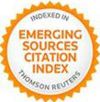Abstract
The use of digital technologies has brought about a remarkable development in the field of archaelogical research. The combined use of tools such as GIS and DTM has guaranteed the possibility of simulating a few aspects of ancient landscapes, contributing to recognise the strategies on which the choice of the sites destined to become settlements in ancient times was based. In the Vaste-Poggiardo area (province of Lecce), systematic research made by the University of Salento has produced an incredibile amount of knowledge on archaelogical evidence dating back to between the Bronze Age and the Middle Ages; on the very basis of this data the experimentation of a spatial analysis in order to reconstruct the ancient landscape has been conducted. The management of the DTM, processed through QGis, has made it possible to use the outcome of spatial analysis to propose a clearer reconstruction of settlements in the Vaste area.
Keywords
Full Text:
PDFDOI: http://dx.doi.org/10.2423/i22394303v10n2p53
References
Aprile, G., & Orlandi Barbano, F. (2008). La Grotta Campana d’Oro di Poggiardo—Lecce. In Atti della XLIII Riunione Scientifica dell’Istituto Italiano di Preistoria e Protostoria (pp. 767–769). Firenze: Istituto Italiano di Preistoria e Protostoria.
Balasubramanian, A. (2017). Digital Elevation Model (DEM) in GIS. University of Mysore.
Baratti, F. (1997). Il sistema per la gestione dei dati di scavo. Elaborazioni cartografiche. In F. D’Andria (Ed.), Metodologie di catalogazione dei Beni Archeologici (pp. 85–95). Lecce-Bari: Martano Editrice, Edipuglia.
Brughmans, T., & Brandes, U., (2017). Visibility Network Patterns and Methods for Studying Visual Relational Phenomena in Archaeology. Frontiers in Digital Humanities: Digital Archaeology, 4, 17. https://doi.org/10.3389/fdigh.2017.00017
Brughmans, T., Keay, S., & Earl, G., (2015). Understanding inter-settlement visibility in Iron Age and Roman Southern Spain with exponential random graph models for visibility networks. Journal of Archaeological Method and Theory, 22, 58- 143.
Burgers, G.-J. (1998). Constructing Messapian Landscapes. Free University of Amsterdam.
Cambi, F. (2011). Manuale di archeologia dei paesaggi. Metodologie, fonti, contesti. Roma: Carocci.
Carluccio, G. (1981). La carta archeologica di Vaste. Studi di Antichità, 2, 87–107.
Casarotto, A., De Guio, A., & Ferrarese, F. (2009). Action GIS: un modello predittivo del movimento antropico in un paesaggio antico. Il caso di studio archeologico della Val d’Alpone (VR). Archeologia e Calcolatori, 20, 291–307.
Chapman, H. (2006). Landscape archaeology and GIS. Cheltenham: The History Press.
Clini, P., Cerquetti, M.G., Bertuccioli, L., Invernizzi, L., & Gasparini, M. (2016). Integrated methodologies for the study, enhancement and sharing of archaeological heritage: the ArcheoFano project. SCIRES-IT - SCIentific RESearch and Information Technology, 6(2), 81-92. http://dx.doi.org/10.2423/i22394303v6n2p81
Cuckovic, Z. (2016). Advanced viewshed analysis: A Quantum GIS plug-in for the analysis of visual landscapes. Journal of Open Source Software, 32(4). Retrieved from https://doi.org/10.21105/joss.00032
D’Andria, F. (1996). La casa in Messapia. In F. D’Andria, K. Mannino (Eds.), Ricerche sulla casa in Magna Grecia e Sicilia, Atti del colloquio (pp. 403–438). Galatina: Congedo editore.
D’Andria, F. (1991). Insediamenti e territorio: L’età storica. In Atti del XXX Convegno Internazionale di Studi sulla Magna Grecia (pp. 383-478). Taranto-Lecce: Istituto per la Storia e l’Archeologia della Magna Grecia.
D’Andria, F., Mastronuzzi, G., & Melissano, V. (2006). La chiesa e la necropoli paleocristiana di Vaste nel Salento. Rivista di Archeologia Cristiana, LXXXII, 231–322.
De Ferrariis, A. (1558). De situ Iapygiae. Basel.
De Montis, A., & Caschili, S., (2012). Nuraghes and landscape planning: coupling viewshed with complex network analysis. Landscape and Urban Planning, 105 (3), 315-324.
Di Paola, G. M. F., & Trotta, V. (2013). La Viewshed analysis in ArchGis 10.1. I casi di Populonia e Segesta. Archeomatica, 3, 12–15.
Fisher, P.F., (1992). First experiments in viewshed uncertainty: Simulting fuzzy viewshed. Photogrammetric Engineering and Remote Sensing, 58 (3), 345-352.
Fisher, P.F., (1994). Probable and fuzzy models of the viewshed operation. In Worboys M. (ed.), Innovations in Gis 1 (pp. 161-175). London: Taylor and Francis.
Forte, M. (2002). I Sistemi Informativi Geografici in Archeologia. Roma: MondoGis.
Hutchinson, M. F., & Gallant, J. C. (1999). Representation of terrain. In P.A. Longley, M.F. Goodchild, D.J. Maguire, D.W. Rhind (Eds.), Geographical Information Systems: Principles, Techniques, Applications and Management (pp. 105–124). Hoboke, New Jersey: John Wiley & Sons.
Hutchinson, M. F., & Gallant, J. C. (2000). Digital elevation models and representation of terrain shape. In J.P.Wilson, J.C. Gallant (Eds.), Terrain Analysis (pp. 29-50). Hoboke, New Jersey: John Wiley & Sons.
Lamboley, J.-L. (1996). Recerches sur les Messapiens. IVe-IIe siècle avant J.-C. Rome: Ecole Française.
Li, Z., Zhu, U., and Gold, C. (2005). Digital Terrain Modeling. Principles and Methodology. Boca Raton, Florida: CRC Press.
Lombardo, M. (1994). Tombe, necropoli e riti funerari in “Messapia”: Evidenze e problemi. Studi di Antichità, 7, 25–45.
Mannino, K. (2015). Ipogeo delle Cariatidi. In G. Mastronuzzi (Ed.), Vaste e Poggiardo. Il patrimonio culturale e ambientale (pp. 29–33). Maglie: Cea Serre Salentine.
Mastronuzzi, G. (2018). Una “torre” di età ellenistica presso Giuggianello—Puglia meridionale. Fold&r, 2018–423, 1–15.
Mastronuzzi, G., Ghio, F., & Melissano, V. (2019). Carta archeologica di Vaste – territorio comunale di Poggiardo (Puglia meridionale). Oxford: BAR Publishing.
Mastronuzzi, G., & Masiello, L. (2019). Giuggianello e il suo territorio tra mito, storia e archeologia. Galatina: Editrice Salentina.
Mastronuzzi, G., & Tulumello, G. (2016). “Deviant burials” nella Puglia tra l’età del Ferro e l’età romana. Antike Kunst, 59, 19–37.
Mazzolai, A. (1965). Ricognizione della Via Aurelia e Clodia nei tratti compresi fra il fiume Fiora e Populonia. Bollettino della Società Storica Maremmana, 11, 17–61.
McCormick, M., Büntgen, U., Cane, M. A., Cook, E. R., Harper, K., Huybers, P., Litt, Th., Manning, S. W., Mayewski, P. A., More, A. F. M., Nicolussi, K., & Tegel, W. (2012). Climate Change during and after the Roman Empire: Reconstructing the Past from Scientific and Historical Evidence. Journal of Interdisciplinary History, XLIII(2), 169–220.
Melissano, V. (2012). Ricerche archeologiche a Vaste, Fondo Melliche. L’età ellenistica. In K. Mannino, R. D’Andria (eds.), Gli allievi raccontano, Atti dell’Incontro di Studio per i trent’anni della Scuola di Specializzazione in Beni Archeologici Università del Salento, I (pp. 79–92). Galatina: Congedo editore.
Miller, C.L., & Laflamme, R.A. (1958). The digital terrain model—Theory & application. Cambridge, Massachussets: M.I.T. Photogrammetry Laboratory.
Notarstefano, F., Pecere, B., & Semeraro, G. (2018). Integrated methodologies in the study of pottery function. SCIRES-IT - SCIentific RESearch and Information Technology, 8(1) 139-148. http://dx.doi.org/10.2423/i22394303v8n1p139
Papa, M.A. (2016). L’intervisibilità. Analisi del paesaggio nella chora della colonia greca di Himera. In Multi, inter- and transdisciplinary research in Landscape Archaeology. Proceedings of the 3rd International Landscape Archaeology Conference LAC2014 (pp. 1-12). Amsterdam: University Library Vrije Universiteit Amsterdam. http://dx.doi.org/10.5463/lac.2014.48.
Pecere, B. (2006). Viewshed e cost surface analysis per uno studio dei sistemi insediativi antichi: Il caso della Daunia tra X e VI secolo a.C. Archeologia e Calcolatori, 17, 173–213.
Peverieri, G. (1995). GIS. Strumenti per la gestione del territorio. Milano: Il Rostro.
Radina, F., & Recchia, G. (2010). Ambra per Agamennone. Indigeni e Micenei tra Adriatico, Ionio ed Egeo. Bari: Adda editore.
Puglia.con: Conoscenza condivisa per il governo del territorio. http://www.sit.puglia.it/portal/sit_portal
r.cost - GRASS GIS manual. Retrieved from https://grass.osgeo.org/grass78/manuals/r.cost.html
Remondino, F., & Campana, S. (2014). 3D Recording and Modelling in Archaeology and Cultural Heritage. Theory and Best Pratices. Oxford: BAR Publishing.
Semeraro, G. (2009). Strumenti per l’analisi dei paesaggi archeologici. Il caso della Messapia ellenistica. In M. Osanna (Ed.), Verso la città. Forme insediative in Lucania e nel mondo italico fra IV e III sec. a.C., Atti delle Giornate di Studio (289–306). Venosa: Osanna.
Stoico F., D’Altilia L. (2012). Analisi spaziali in archeologia dei paesaggi: il progetto N.D.S.S. (Northen Daunian Subappennino Survey). In F. Cantone (Ed.), ARCHEOFOSS. Open Source, Free Software e Open Format nei processi di ricerca archeologica. Atti del VI Workshop (Napoli, 9-10 giugno 2011) (pp. 245-252). Pozzuoli: Naus Editoria.
Tölle-Kastenbein, R. (1990). Archeologia dell’acqua: La cultura idraulica nel mondo classico. Milano: Longanesi.
Valzano, V., Mannino, K., Bandiera, A., Brogi, A., & Zannoni, M. (2010). L’Ipogeo delle Cariatidi di Vaste. The Hypogeum of the Caryatids at Vaste [DVD-ROM]. Lecce. IT: Coordinamento SIBA Università del Salento & CASPUR. DVD-ROM was awarded nationally among the best digital content in the "eScience and Technology" and "eCulture and Heritage" categories of the Italian eContent Award 2010. Retrieved from http://www.ceit-otranto.it/index.php/progetti/32-zeus-di-ugento (DVD-ROM); Video-Documentary: https://vimeo.com/407020593 (IT), https://vimeo.com/407121650 (EN).
Wheatley, D. (1995). Cumulative viewshed analysis: A GIS-based method for investigating intervisibility and its archaeological application. In G. Lock, Z. Stancic (Eds.), Archaeology and GIS: a European Perspective (pp. 171–185). Boca Raton, Florida: CRC Press.
Wheatley, D., & Gillings M. (2002). Spatial Technology and Archaeology. The Archaeological Applications of Gis. New York: Taylor and Francis.
Yntema, D. (2013). The Archaeology of South-East Italy in the First Millennium BC. Amsterdam: University Press).
Zezza, F. (1997). Indagini chimico-fisiche sui materiali lapidei dall’area archeologica di Vaste (Le). In F. D’Andria (Ed.), Metodologie di catalogazione dei Beni Archeologici (pp. 229–241). Lecce-Bari: Martano Editrice, Edipuglia.
Article Metrics
Metrics powered by PLOS ALM
Refbacks
- There are currently no refbacks.
Copyright (c) 2020 Giacomo Vizzino, Giovanni Mastronuzzi

This work is licensed under a Creative Commons Attribution-NonCommercial-NoDerivatives 4.0 International License.
SCIRES-IT, e-ISSN 2239-4303
Journal founded by Virginia Valzano





